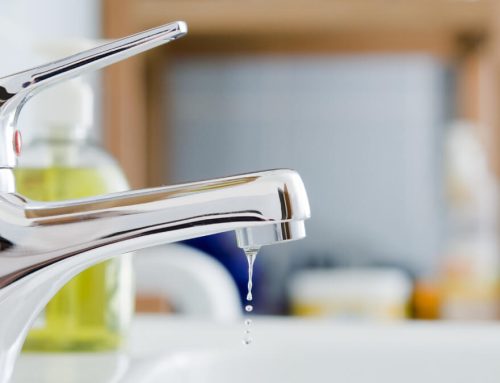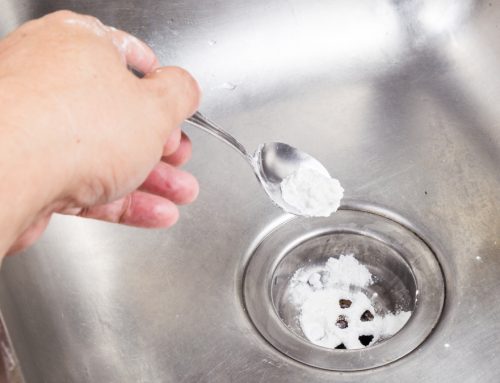
Ways to Save Water and Energy with Low-Flow Plumbing Fixtures
Saving water and energy is a wise and environmentally conscious move for your wallet and the environment. Low-flow plumbing fixtures present an excellent solution to reduce water consumption without losing performance. Learn about the benefits of water-efficient fixtures, how they compare to previous models and effective strategies to conserve even more water in your daily routine.
Key Key Reasons to Consider Installing Eco-Friendly Plumbing Fixtures
Less water waste
The EPA’s WaterSense program has estimated that you can save 700 gallons of water per year by swapping the existing faucets in your home with new, low-flow designs.
Lowering your monthly water bills
Low-flow fixtures can cut your monthly utility bills by using less water. In fact, a WaterSense-labeled showerhead can save 4 gallons of water whenever you shower, which adds up over time.
Lower water heating costs
Using less water to shower, cook and clean also means you use less hot water, which further increases your savings by lowering hot water costs.
Helping ensure a long plumbing system life span
Less water flow means less strain on your plumbing system, hopefully extending its life and decreasing the need for repairs.
As you can see, trying low-flow faucets, showerheads and toilets enhances your plumbing’s efficiency in a number of ways:
Key Components of Low-Flow Plumbing Fixtures
Low-flow fixtures have a few different design options to preserve performance while using less water. Here’s how they do it:
- Dual-flush technology: More low-flow designs feature two flush buttons—one for liquid waste using less water, and a fuller flush for solid waste. This optimizes water use based on need.
- Flow restrictors: Faucets with these devices restrict the amount of water that passes through the fixture while preventing a noticeable drop in pressure.
- Aerators: A number of low-flow faucets and showerheads include aerators, mixing air with water to retain pressure while still lowering the volume of water used.
How Much Water Can Low-Flow Fixtures Save?
Low-flow plumbing fixtures began picking up traction around the 1990s. The movement was primarily driven by heightened awareness of water conservation concerns and our environmental impact. The Energy Policy Act of 1992 established maximum flow rates for faucets, showerheads and toilets throughout the United States, supporting the prompt adoption of a new generation of low-flow plumbing fixtures. This initial legislation paved the way for more efficient fixture designs designed for reducing water consumption while maintaining the same level performance.
Take into account how much water low-flow fixtures need compared to their older counterparts:
- Faucets: Old faucets run at about 2.2 gallons per minute (gpm), whereas low-flow faucets lower to 1.5 gpm or less without sacrificing water pressure.
- Showerheads: The industry standard for showerheads was 2.5 gpm. Today’s showerheads reduce water use to 2.0 gpm or lower.
- Toilets: Old toilets can use up to a maximum of 7 gallons per flush (gpf). On the other hand, the current federal standard maximum is 1.6 gpf, with some dual-flush models using as little as 1.28 gpf.
Five Suggestions to Save Even More Water
While these water-saving fixtures make a big difference on their own, you can go further to conserve water each time you use the plumbing. Here are a handful of useful suggestions:
- Shut off the water whenever you brush your teeth: Try and only leave the tap running if you’re actively using it. Once you leave the bathroom or spend the time to actually brush your teeth, turn off the faucet to conserve water.
- Don’t flush trash: Toilets are only designed to process toilet paper and human waste. Flushing any other materials needlessly wastes water and increases the risk of a clog forming. Do your plumbing a favor by always disposing of facial tissues, paper towels, cotton balls and feminine hygiene products in the garbage.
- Take brief showers: Even if you own low-flow showerheads, you can still waste water if you shower for too long. Speeding up your shower time by a minute or two saves water and reduces energy use.
- Use dual-flush toilets appropriately: The dual-flush capability only benefits you if everyone using that bathroom knows the right way to use it it. Use the half-flush button for liquid waste and only press the full flush for solid waste. Some handle-flush toilets also have dual-flush functionality. A partial flush uses less water, while keeping the handle depressed releases the standard amount of water to remove solid waste more thoroughly.
- Take care of leaks right away: Even low-flow fixtures can leak, wasting water and reducing efficiency. Spend a few minutes every now and then checking for leaks and address any you find to sustain your water conservation efforts.
Ask About Your Free Estimate for Low-Flow Plumbing Fixtures Today
Are you ready to cut your water usage and save money? Canyon State Air Conditioning, Heating & Plumbing is here to help! We install high-performance low-flow faucets, showerheads and toilets to promote water and energy conservation. With our 100% satisfaction guarantee, you can rely on us to deliver the quality products and services you need. The moment you’re ready to upgrade your plumbing fixtures or want more water conservation tips, please contact us today.

